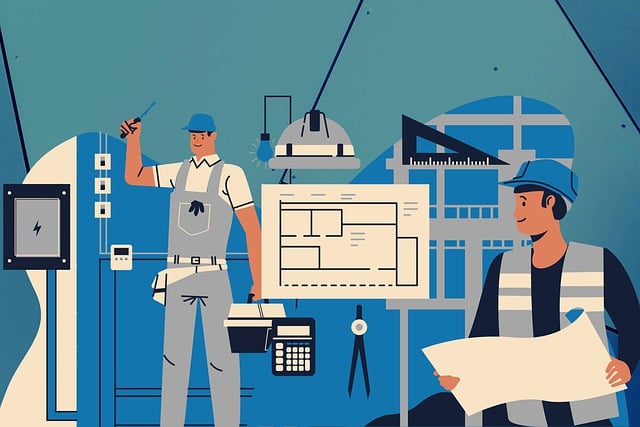3D steel modeling is transforming structural engineering and design by offering a powerful tool for visualizing and interacting with projects in three dimensions. This technology goes beyond traditional 2D drawings, providing an enhanced understanding of complex structures. Key benefits include improved decision-making, better communication, higher accuracy, reduced errors, early clash detection, efficient planning, cost savings, and faster timelines. By transitioning from 2D plans, stakeholders gain an immersive view of the final structure before construction. Clash detection features enable early identification and resolution of potential conflicts, enhancing collaboration and leading to successful implementation of structural designs. Best practices involve using updated software with advanced features, maintaining structured workflows, focusing on high-fidelity geometry, collaborating with experts, and leveraging cloud-based version control platforms for seamless access to the latest iterations.
“Unlocking the power of visualization, 3D steel modeling is transforming the way we design and communicate. This cutting-edge technology offers a deeper understanding of complex steel structures, enabling engineers and architects to make informed decisions early in the design process.
From enhancing collaboration to identifying potential clashes, this article explores the benefits and best practices of 3D steel modeling. We’ll delve into its role as a game-changer for visualization, clash detection, and efficient project execution.”
Understanding 3D Steel Modeling: The Basics and Benefits
3D steel modeling is a powerful tool that transforms the way structural engineers and designers visualize and interact with their projects. It involves creating digital representations of steel components, enabling users to explore intricate designs in three dimensions. By moving beyond traditional 2D drawings, this technology offers a more comprehensive understanding of complex structures. Engineers can now inspect every detail, from individual elements to the overall assembly, facilitating better decision-making.
The benefits are numerous: improved visualization for better communication, enhanced accuracy leading to reduced errors, and early clash detection between various components. This process allows for efficient planning, cost savings, and faster project timelines. With 3D steel modeling, professionals can identify potential issues before fabrication or installation, ensuring smoother construction and higher-quality outcomes.
The Role of 3D Modeling in Visualization and Design Communication
In the realm of architectural and engineering design, 3D steel modeling has emerged as a powerful tool for visualization and clash detection. It allows designers to create precise digital representations of steel structures, enabling them to communicate complex design ideas more effectively. By transitioning from 2D plans and drawings, 3D modeling provides an immersive experience, allowing stakeholders to visualize the final structure before construction begins. This is particularly beneficial for steel fabrication and construction processes, as it helps identify potential conflicts or overlaps between different components.
The benefits of 3D steel modeling extend beyond initial visualization. It facilitates better design coordination and collaboration among various project teams, including architects, engineers, and contractors. With detailed 3D models, potential issues can be detected early in the design phase, reducing costly on-site modifications. This advanced level of clash detection ensures that the final constructed building or infrastructure is not only aesthetically pleasing but also structurally sound and efficient.
Clash Detection: Uncovering Conflicts Early in the Design Process
Clash detection is a vital aspect of 3D steel modeling, allowing designers and engineers to uncover potential conflicts and errors early in the design process. By visualizing complex structural components and systems in three-dimensional space, software tools enable thorough analysis and simulation. This proactive approach ensures that any issues with interferences, misalignments, or overlapping elements are identified and resolved before physical prototypes are created or construction begins.
In the world of 3D steel modeling, clash detection is a game-changer for enhancing efficiency and reducing costs. It helps to avoid costly mistakes, delays, and revisions down the line by providing digital representations that accurately replicate physical constraints. This precision facilitates better decision-making, fosters collaboration among team members, and ultimately contributes to the successful implementation of structural designs.
Best Practices and Tips for Effective 3D Steel Modeling
When engaging in 3D steel modeling for visualization and clash detection, adopting best practices can significantly enhance efficiency and accuracy. Firstly, ensure your software is up-to-date and capable of handling complex steel structures. This enables access to advanced features like precise tolerancing tools and realistic rendering options. Secondly, maintain a structured and organized workflow by adhering to industry standards for naming conventions and layer management. Well-named components and layers facilitate easier navigation and modification during the modeling process and beyond.
Additionally, focus on achieving high-fidelity geometry. Accurately represent steel elements, considering factors such as profiles, tolerances, and connections. This level of detail is crucial for meaningful clash detection and visualization. Utilize reference standards and collaborate with subject matter experts to validate your models. Regularly back up your work and consider cloud-based platforms for version control, ensuring easy access to the latest iterations.
3D steel modeling has emerged as an indispensable tool for architects, engineers, and designers, revolutionizing the way they visualize and communicate complex structural designs. By leveraging advanced software and techniques, professionals can now create precise digital models, enabling effective clash detection at early design stages. This not only streamlines project workflows but also enhances overall project quality and efficiency. With the right practices and tips in place, 3D steel modeling promises to remain a game-changer in the industry, ensuring structures are designed with intricate detail and potential conflicts are identified before construction begins.
